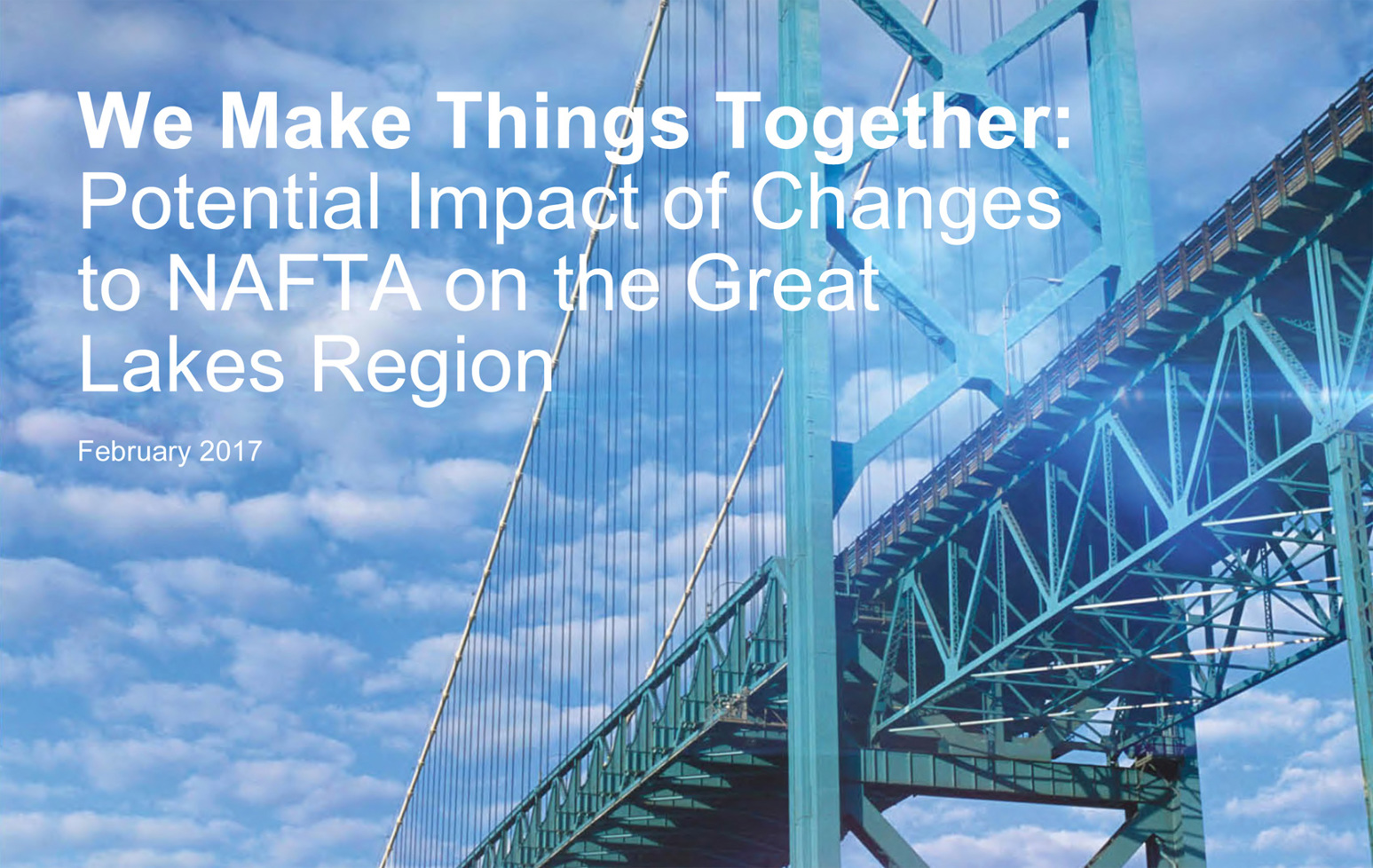LONDON, Ontario – Feb 14, 2017 – On the campaign trail, United States President Donald Trump called the North American Free Trade Agreement (NAFTA) the “worst trade deal in history” lamenting “It’s a political and politician-made disaster.” Under NAFTA, U.S. companies saw tariffs on imports drop 98 per cent, exports increase, employment climb and output almost triple.
President Trump’s tone seems to have changed somewhat, at least when it comes to Canada. He stated: “We have a very outstanding trade relationship with Canada" and when it comes to NAFTA “we’ll be tweaking it” is far different from his original signal to “rip up” the agreement. At this point it’s impossible to predict what the Trump administration means by tweaking, but the notion of some form of border thickening must still be considered a possibility.
While much has been written about the overall trade relationship between Canada and the United States, the Ivey Business School’s Lawrence National Centre for Policy and Management’s latest study We Make Things Together provides a detailed picture of the trade interdependence between Ontario and each of the eight states making up the Great Lakes region (GLS8).
“The significant movement of goods and services between Ontario and the GLS8 makes the region a powerful ‘super-cluster’ that draws competitive advantage from its highly integrated supply chains,” says Mike Moffatt, Interim Director of the Lawrence Centre. “Many companies working on both sides of the border in the Great Lakes region don’t simply export finished products back and forth. It’s fair to say these firms make things together.”
It is estimated the Ontario-GLS8 trade in goods to be worth CA$200 billion in 2015 with Ontario having a trade surplus in goods of roughly CA$5 billion. This economic engine allows the region to compete globally in key industries, such as automotive and agri-food. To reinforce the integrated nature of this relationship We Make Things Together explores case studies of two companies moving goods and people in the region.
“The stories of our case-study firms reveal the benefits of free-trade crossing back and forth in the Great Lakes,” says Moffatt. “Through analysis it’s clear the manufacturing plants that 'win' through a thickening of the Canada-U.S. border are not in North America, but rather in Europe and Asia. Great Lakes firms may no longer be able to compete with low-cost, developing regions.”
Media Contact
Ivan Langrish, Senior Manager, Media Strategy
Ivey Business School, Western University
ilangrish@ivey.ca
416-203-0664
About the Lawrence National Centre for Policy and Management
The Lawrence National Centre for Policy and Management bridges business strategy and government policy to contribute to Canada’s global competitiveness. The Centre educates future business leaders in public policy and government leaders in business strategy and conducts leading-edge research on major issues that involve business-government coordination. www.ivey.uwo.ca/lawrencecentre
About the Ivey Business School, Western University
The Ivey Business School (www.ivey.ca) at Western University is Canada’s leading provider of relevant, innovative and comprehensive business education. Drawing on extensive research and business experience, Ivey faculty provide the best classroom experience, equipping graduates with the skills and capabilities they need to tackle the leadership challenges in today’s complex business world. Ivey offers world-renowned undergraduate and graduate degree programs as well as Executive Education at campuses in London (Ontario), Toronto and Hong Kong.



